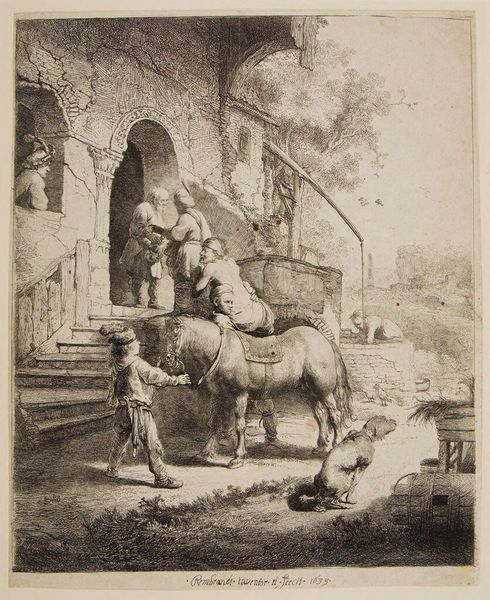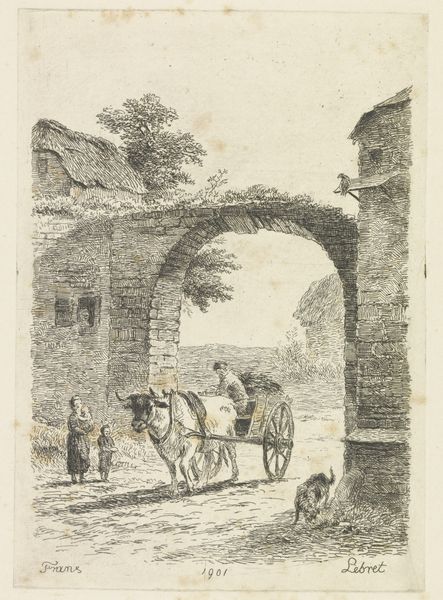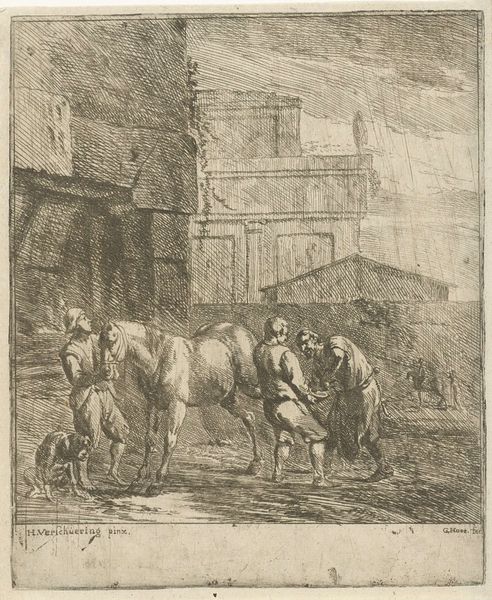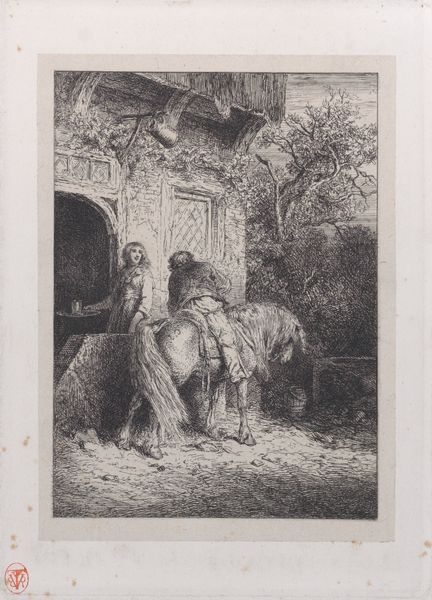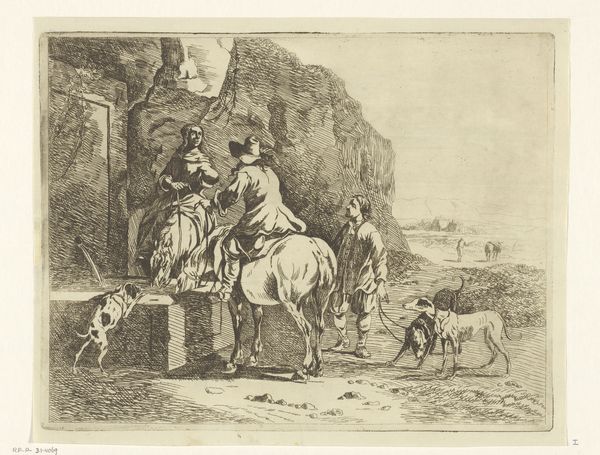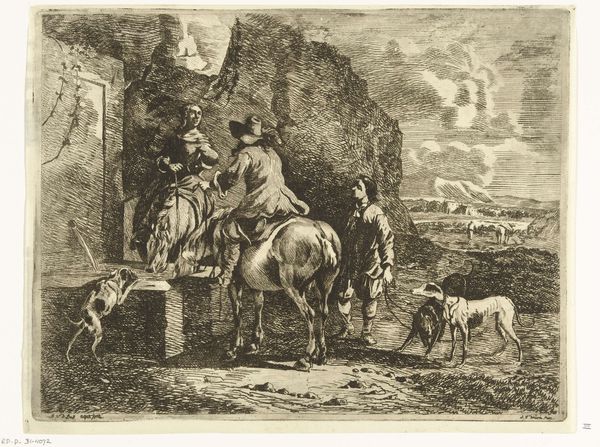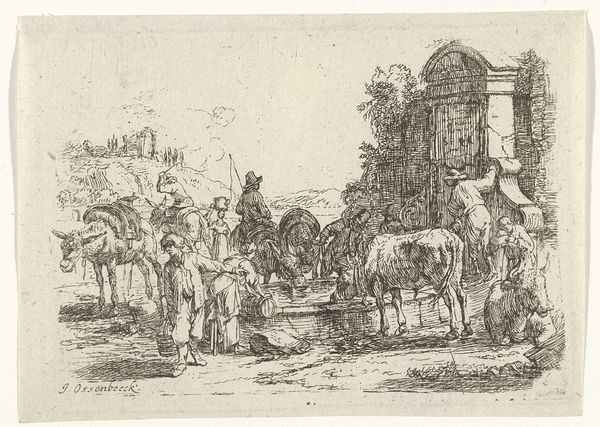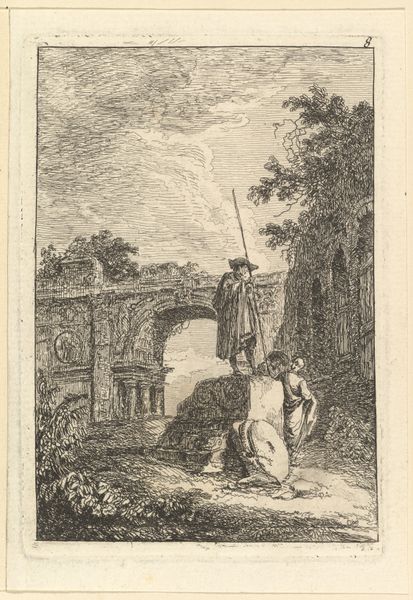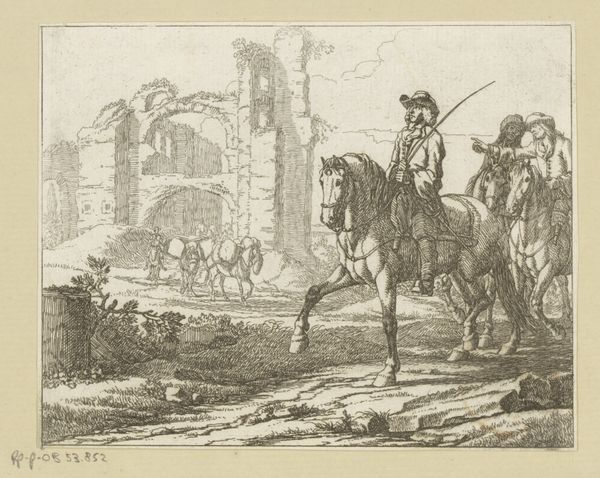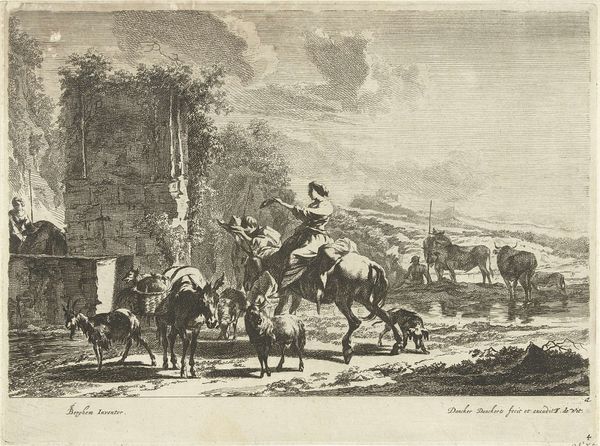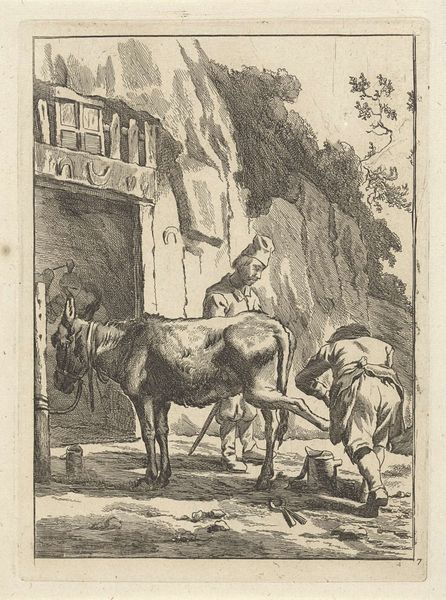
drawing, print, etching
#
portrait
#
drawing
#
narrative-art
#
baroque
#
dutch-golden-age
# print
#
etching
#
dog
#
landscape
#
boy
#
figuration
#
horse
#
men
#
genre-painting
#
history-painting
Dimensions: Sheet: 10 5/16 × 8 3/8 in. (26.2 × 21.3 cm) Plate: 10 3/16 × 8 1/16 in. (25.8 × 20.5 cm)
Copyright: Public Domain
Editor: So, this is Rembrandt van Rijn's "The Good Samaritan" from 1633, an etching. It's a pretty busy scene with lots of figures. It’s an intricate work, quite detailed despite its relatively small size. What are your thoughts on this work? Curator: Well, first consider that Rembrandt was not just illustrating a biblical story but also participating in a broader print market. The very act of creating this image as a readily reproducible etching points to its intended consumption by a wider audience beyond the wealthy elite. The labor involved in etching—the physical act of incising the design onto a metal plate, the selection of materials, the printing process itself— these choices all impact the image. Editor: So you're saying the process itself gives the art meaning? Curator: Exactly! Think about the contrast between the delicate lines used to depict the landscape versus the heavier shading used to convey the figures’ emotions. Rembrandt's manipulation of the medium is telling us about the value of labor and materiality, even suggesting a link to the marketplace. Editor: I see. It almost challenges the preciousness associated with traditional painting, since etching made prints readily accessible to people outside the elite class. What is Rembrandt trying to achieve with this approach? Curator: Precisely. The distribution and accessibility, inherent in printmaking, democratized art. This makes you think about who his patrons were, and to what extent did they approve of the democratization that printmaking allows for? What tensions were apparent in the Dutch art market between catering to wealthy patrons and a middle-class market? Editor: It's fascinating to see artmaking not just as artistic creation, but also as a process embedded in economic and social dynamics. Curator: Indeed. Looking closely at Rembrandt’s process encourages us to consider his intended audience and his place in the cultural marketplace, changing how we value it today.
Comments
No comments
Be the first to comment and join the conversation on the ultimate creative platform.
